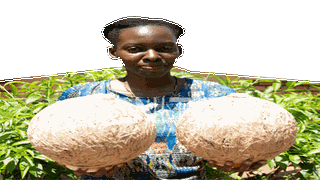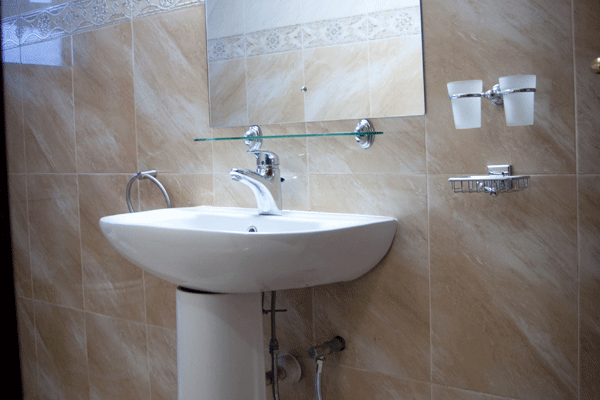
Cate Nakayiza specialises in making art of out natural fibres. PHOTO\EDGAR R BATTE
|Homes and Property
Prime
Nakayiza’s love affair with banana fibre, sisal for décor
What you need to know:
- Cate Nakayiza is living her artist’s dream creating home and office decor from natural materials such as banana fibre. The materials are relatively cheap, making her handcrafted products affordable on the market.
- Prices: Nakayiza buys a sack of banana fibre at Shs10, 000. Her cheapest items cost as little as Shs5, 000 which makes them accessible to many people who wish to have affordable home or office décor.
Her work environment is busy. Cate Nakayiza keeps picking from a pile of banana fibres then reaches for glue which she uses to stick a cylindrical banana fibre ball.
Somewhere on its orb, is a hole which I later learn is left to hang on either a ceiling or bedside lamp. Under the 11 am sunshine, a number of light and lampholders made of sisal and banana fibre, of different shapes and colours, line part of a veranda for them to dry.
To demonstrate how her lampshades work, she picks one and mounts it on a sitting room ceiling light. The cream shade adds beauty and uniqueness to the light and dims its effect a notch.
Another sisal ball in the living room is made of different colours against a soft blue wall. When it is turned on, it illuminates the room with simple yet recognisable multi-colour effects.
For a moment, two little ones who have been concentrating on finishing their home-schooling session, are excited at the sight of a colourful globe around the ‘usual’ white bulb that is now covered in a ball.
Nakayiza’s art is a good addition to her parents’ home interior spaces, and as she later adds, she also makes wall art, wall hangings like clocks, decorative mirrors, banana fibre clocks and table pieces, table mats, trays, food baskets, and lampshades.
Her story of ingenuity dates back to her childhood. When she was younger, she always tried to imagine how she could create beautiful things. Whenever she accompanied her parents to shop, her eyes focused on items and her mind would conjure up images on what she could create, and with more beautiful designs.
She would get her mother’s and sister’s clothes, cut them and design them as her imagination inspired her to. In changing the original designs into her own conceptions, she was convinced that it was something she could carry on.
As such, it was natural to choose fine art and industrial design at Makerere University. Today, Nakayiza is a visual artist who mainly does handcrafts and a few fashion designs.
She runs Katrina Designs Ug, an arts and craft enterprise that mainly uses natural materials like banana fibres and sisal to make the crafts. She also does fashion but mainly patchwork on t-shirts and bags.
“Initially, I didn’t know that I could be good as I have come to be with the use of banana fibre to make decoration items. At university, I majored in jewellery, fashion, and sculpture but after graduating, I was not sure [what my major should be] so I decided to do an internet search on different organisations that do art,” Nakayiza recalls.
She started writing applications for industrial training and mentorship. The first response she received was after a year, from Texfad Uganda situated in Bwebajja at the time, now located in Misindye.
Texfad deals in textile development with a focus on the development of banana fibres as a resource of textile development. “I was told to choose what to study. I wanted to learn handicrafts and when I noticed that they make a lot of banana fibre items,” she recollects.
Some of Texfad’s products include floor rugs, table mats and table runners, wall hangings, centrepieces, and more. That inspired Nakayiza to start her internship there and later on undertook a business incubation programme.
She was there for four years. Today, she has established a career as a maker of décor items. She sells handmade items both internationally and locally, to clients in search of natural décor stuff as gifts or to serve decorative purposes.
“Many of the people who buy my items need them for home use. Others would like to carry them as souvenirs to keep in their homes, perhaps to remind them or connect with Uganda as their home country. They also carry them to their friends and relatives outside the country,” she adds.
She observes that when the banana fibre is varnished, it not only beautifies it but also sustains it. As the world drifts towards eco-friendly items, décor items made by artists such as Nakayiza are in vogue for their environmental sustainability.
According to Décor Tips, thanks to the rising demand for sustainable and environmentally friendly products, the use of natural fibres has made a comeback.
“Everyone wants to know what natural fibres are available, where they come from and what they can be used for. Natural fibres can be of animal or vegetable origin. Although of course, we are talking about home décor, vegetable fibres are what’s rising in popularity. You can find them in decorative objects, furniture, rugs, etc,” the online platform states, in part.

The young artist has chosen to apply her crafting skill to natural materials to produce trendy décor in a sustainable endeavour. PHOTO/EDGAR R BATTE
Nakayiza does her work based on the order. When someone makes an order, she takes details, including specifics of the purpose for which the client needs the items; decorative or for use at a function as well as its placement.
“Natural or indigenously made interior design items are cheaper because the materials are easy to get as opposed to other décor options. I get materials from farmers and friends who go to the village,” she explains.
She buys a sack of banana fibre at Shs10, 000.
Affordable art
Her cheapest items cost as little as Shs5, 000 which makes them accessible to many people who wish to have affordable home or office décor.
That is not to say that there aren’t customers who find her products expensive. “I explain to them that something made out of banana fibre and something made out of fabric are different. I would want to imagine that fibre is treasurable yet readily available almost everywhere. It is the creative manipulation of the material that makes it different so I have to value it. Besides that, I do not add any bad chemicals while making the décor items and I make sure to make them different so that their beauty represents my brand,” she adds.
Writer Avneet Kaur observes that the use of banana stems as a source of fibre declined after other convenient fibres such as cotton and silk became popular. But in recent years the commercial value of banana fibre has increased and it is used all over the world for multiple purposes from making tea bags and sanitary napkins to Japanese yen notes and car tyres.
Global fibre
Like Uganda, banana cultivation from which banana fibre is harvested is a very profitable agriculture business in India. “Extracted banana fibres are increasingly being used in apparel, handicraft products, home décor, furnishing and other high vale paper making items. Banana stems from Tamil Nadu, Maharashtra and Gujarat are ideal for usage in the varied application, as the fibres have got superior strength and shine,” writes Harish Kumar, a marketing and communication professional with expertise in brand management and business blogging.
He adds, “In the textile industry, banana fibre is gaining popularity as a raw material and an increasing amount of apparel producers and fashion designers are embracing its use for making clothes.”
Part of Nakayiza’s physical showcase is at her parents’ home, for now. It doubles as her workstation. Her online shop is on the social media platforms of Katrina Designs Ug, as her major marketing channel.





